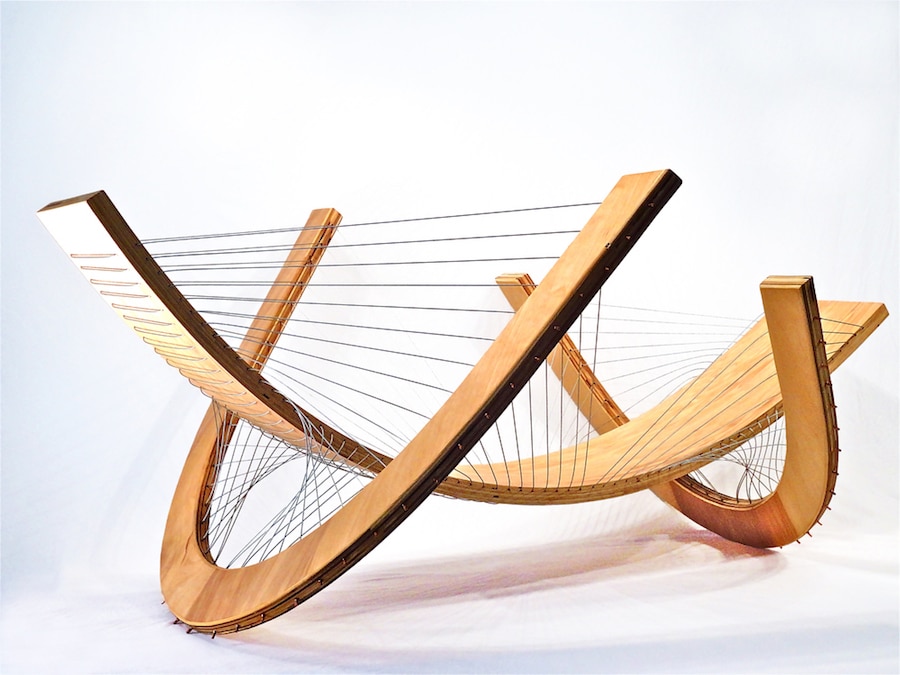
Contemporary furniture designer Robby Cuthbert mixes architectural principles and organic forms in his sculptural pieces. Coffee tables, lamps, shelves, and chairs are all carefully crafted with wood and steel cables based on principles of tensegrity (or tension integrity). The results are pieces of light and airy modern furniture.
And just what is tensegrity? A term coined by famed American architect Buckminster Fuller, tensegrity structures rely on an overall balance of tension to create stability. Think of a geodesic dome—light and delicate in appearance, it relies on the tension between interlocking parts for its architectural strength.
Using this theory, the Palo Alto-based furniture designer doesn’t rely on glue, screws, and nails to hold together his furniture. Instead, the pieces are engineered to perfection, with tension balanced in the steel cables or cantilevered to a single point. With each tensegrity structure representing a mixture of functional furniture and elegant artwork, it’s no wonder that Cuthbert studied studio art with an attraction toward architecture and sculpture.
“I generate architectural and organic forms, often with a hint of the fantastical or whimsical, that examine the role of tension in the storing and release of energy,” Cuthbert shares. “With wood and wire as my primary materials, I have played with the suggestion of pent up energy held in check by opposing forces. Each piece maintains a state of potential energy that, if released, would result in a transformation of the work.”
Cuthbert’s cutting-edge furniture is available via his website, and he is also available for commission work.
This contemporary furniture uses tension—not screws or nails—to hold its structure.
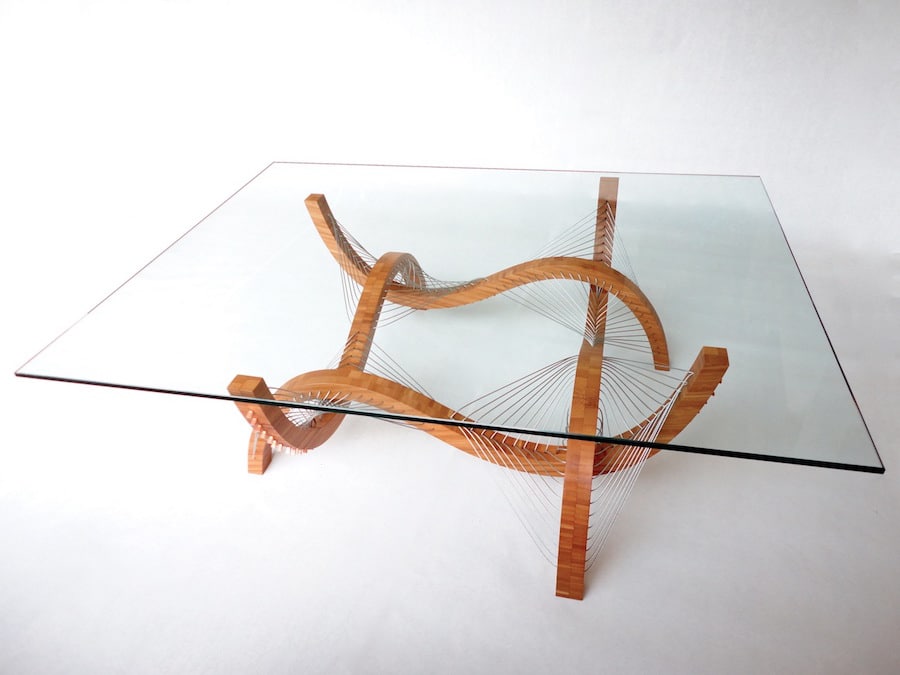
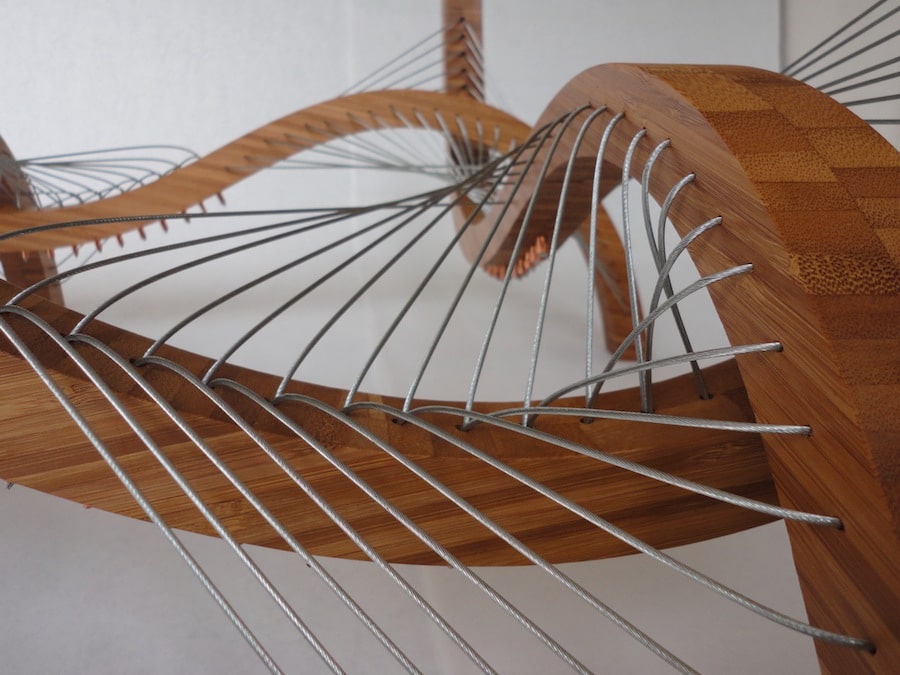
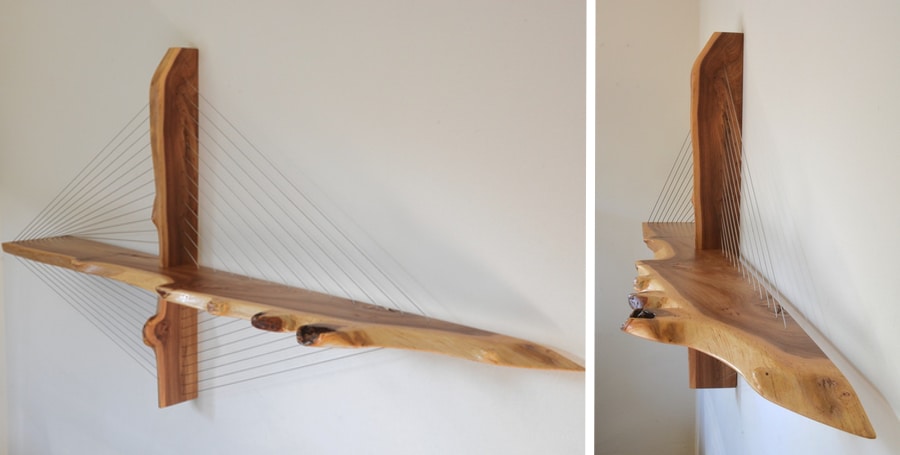
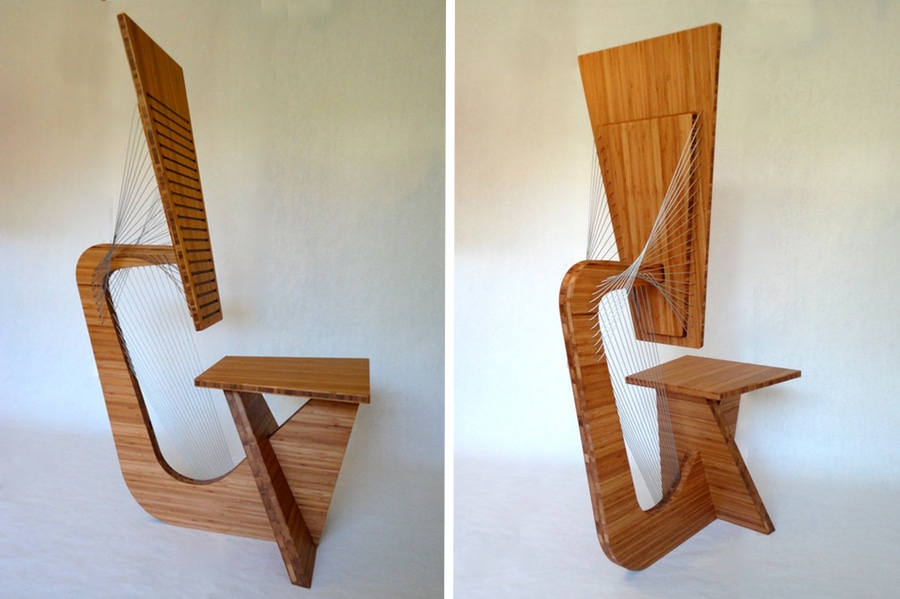
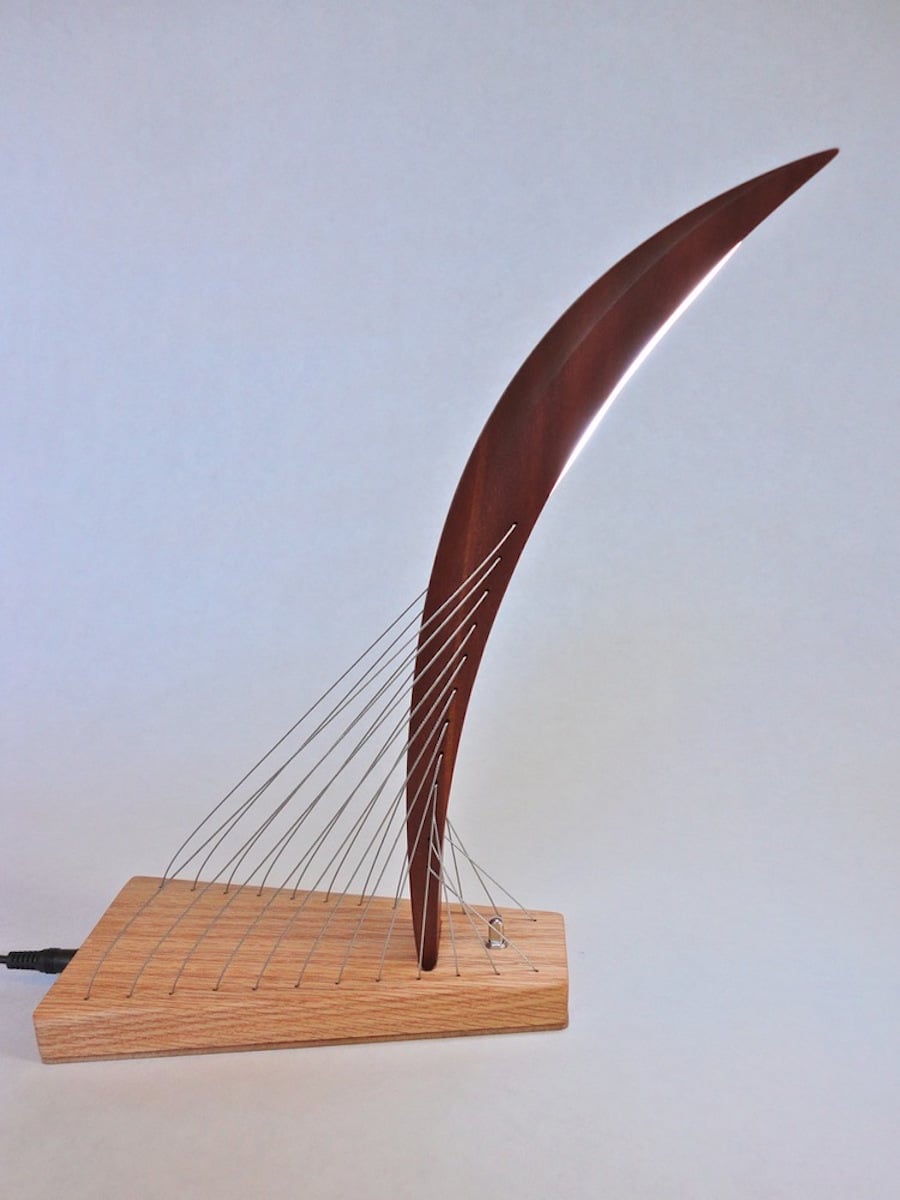
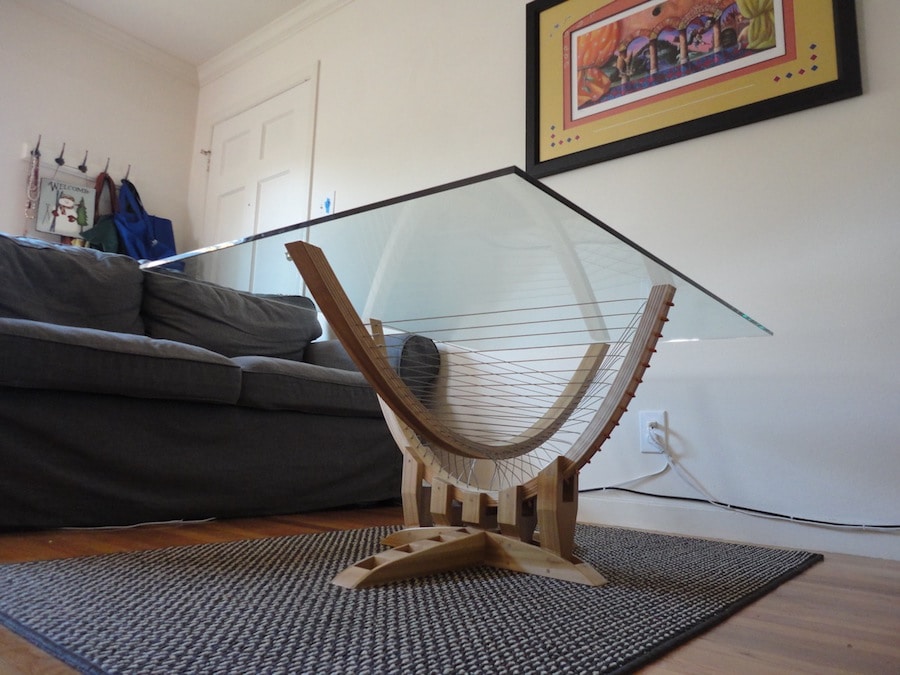
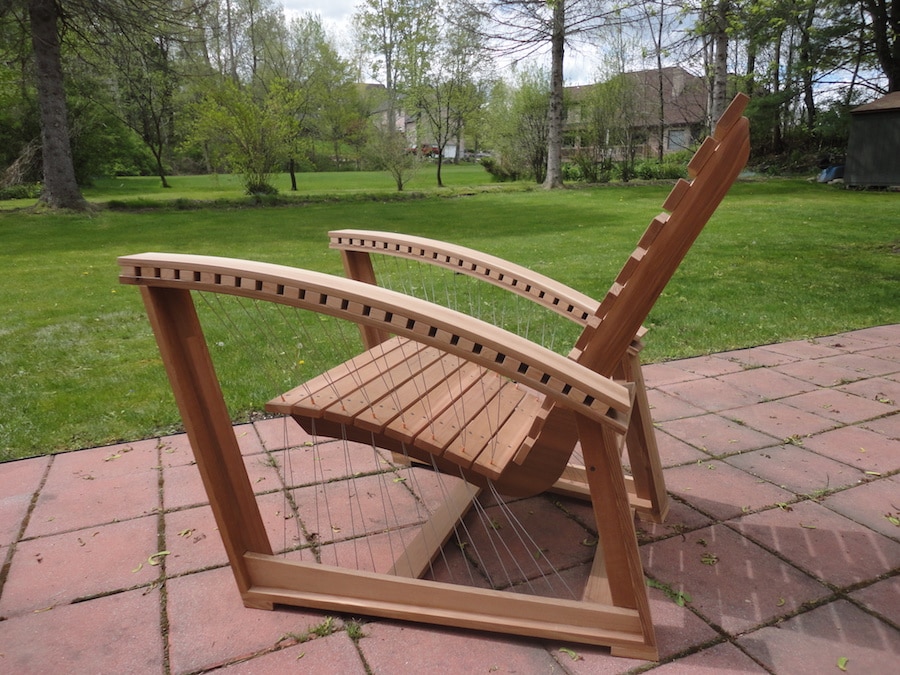
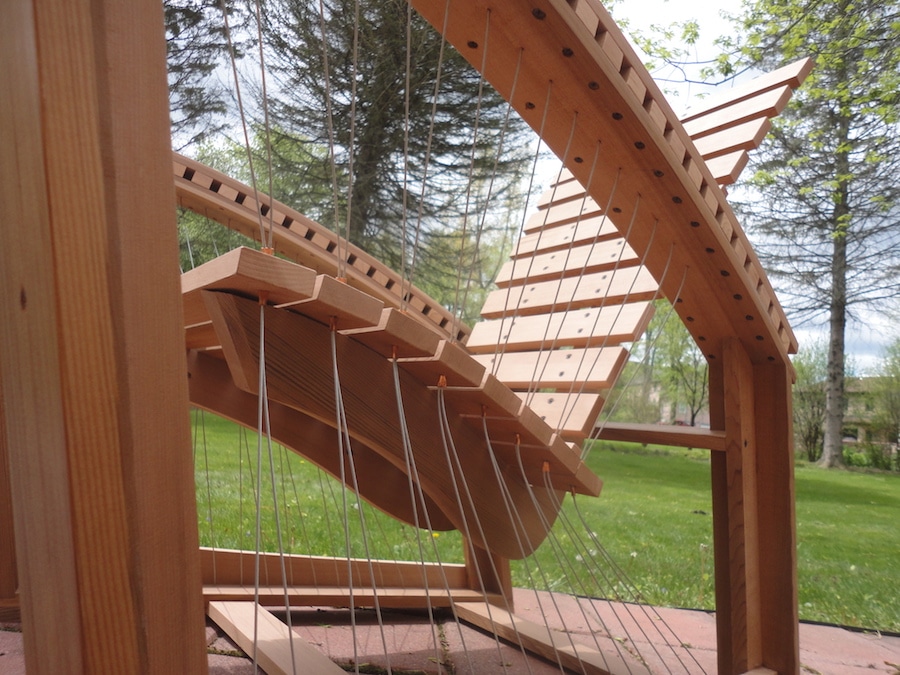
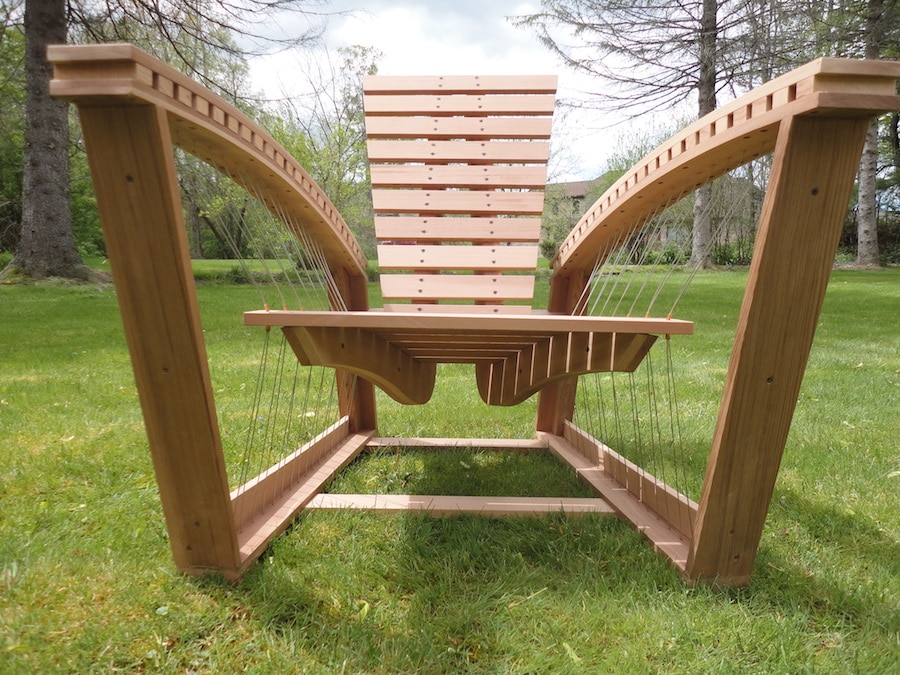

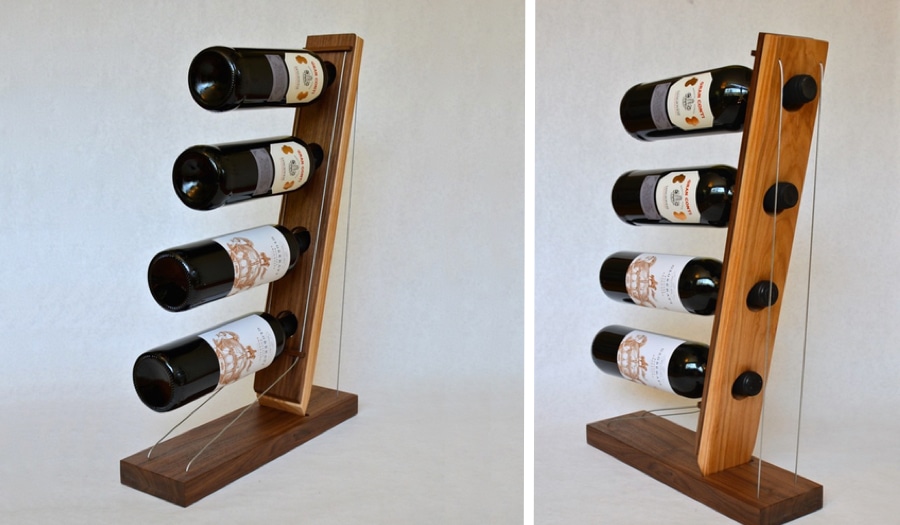
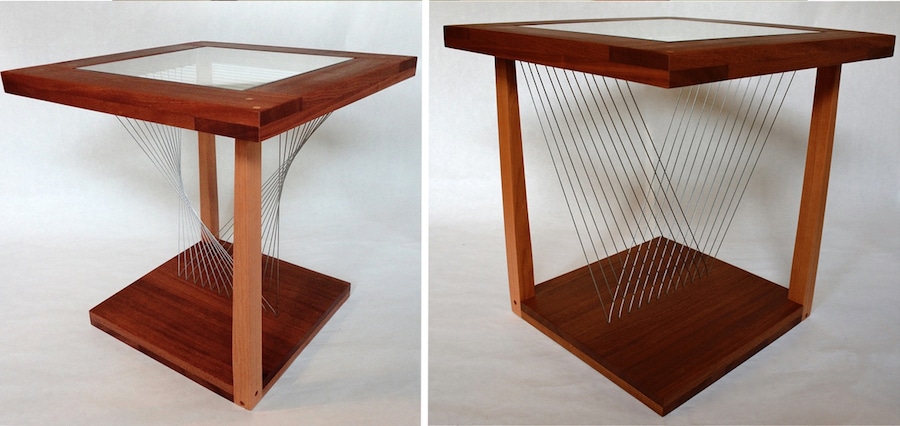



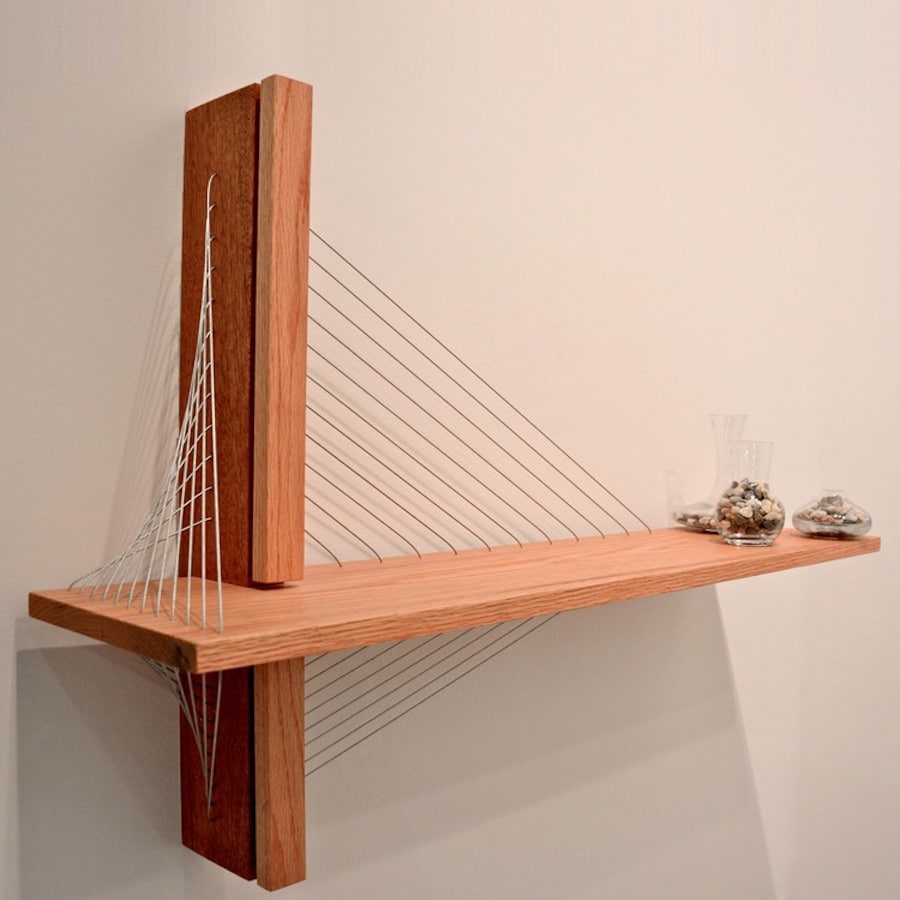


Hear the designer discuss his work and the principles of tension based furniture design.
Robby Cuthbert: Website | Facebook
